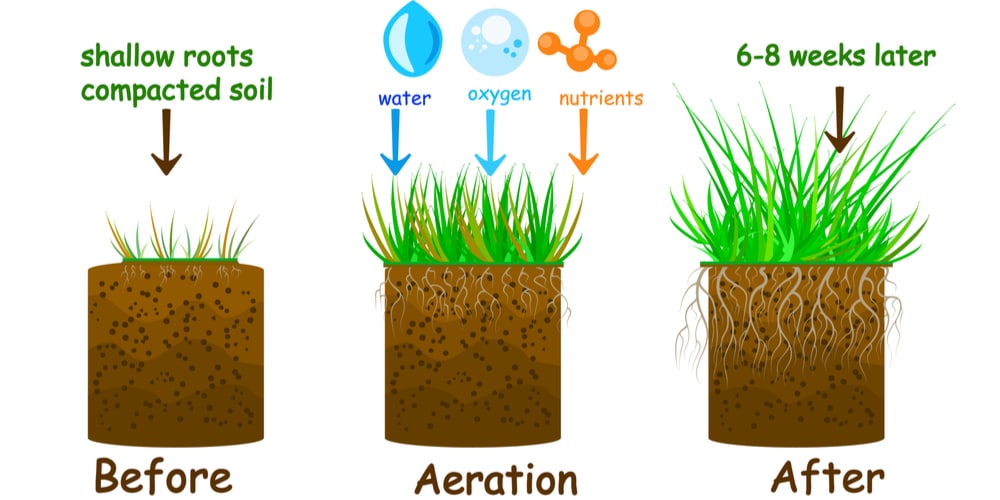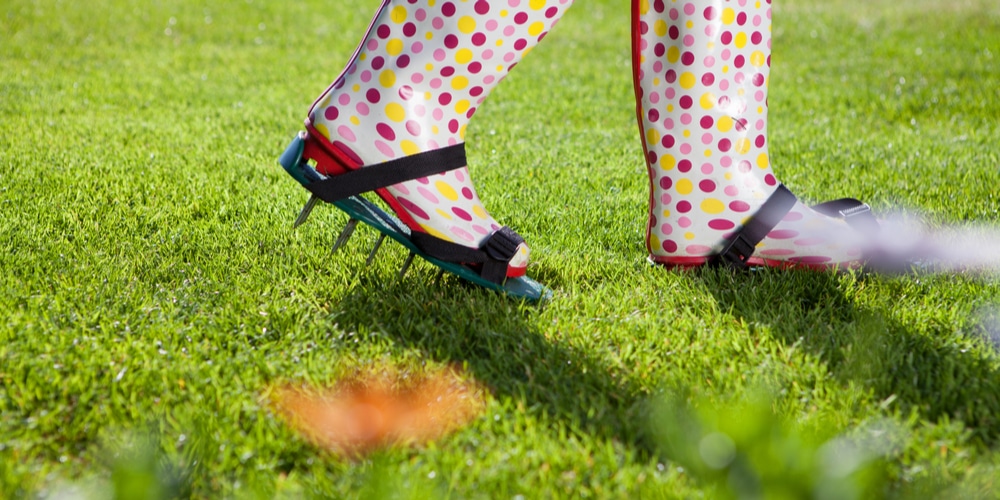Naturally, most lawn owners wish to have an aesthetically appealing green lawn without committing a lot of energy, time and capital. This priceless dream can easily be achieved through essential lawn care practices like mowing and aeration.
Aeration helps enhance the beauty of your lawn by allowing nutrients, water and air to quickly get to the roots of the grasses you have planted on your lawn.
Good lawn care does not just end with aeration but is enhanced by the additional practices you perform after aerating. Some of the practices may promote the growth of the grass, while some, like mowing after aeration, may hinder proper growth. This article will discuss more mowing after aeration and why it is discouraged.
Can You Mow After Aeration?

Generally, mowing after aeration is not a good lawn maintenance practice. When you aerate, you create holes in the soil to allow water and air to move through the soil to the roots smoothly.
Mowing after aeration fills up those tiny holes and blocks air and water from reaching the roots directly. Therefore, if you must mow, you should start by mowing the lawn to the most preferred height before you start aerating.
Further, if you have plans to do reseeding or add fertilizer to the grass after aerating, mowing should be avoided by all means. Wait until the new seeds germinate or the roots pick adequate fertilizer before mowing.
Otherwise, the new seeds will not germinate and grow if you mow after reseeding.
As for mowing after aeration, you can mow the lawn two or more weeks after aerating. Within this time after aeration, the roots will have received a good amount of water and nutrients.
Importantly, if you must mow after aerating, it may be very helpful to get a grass catcher because it will hold on to the grass that would have spread on the lawn and blocked the air spaces. A grass catcher helps regulate grass discharge while mowing.
Several known issues may discourage a gardener from mowing their lawn after aeration. Generally, you will be damaging either your aeration holes, the lawnmower or the new seeds planted after aeration.
Typically, running a mower or walking on an aerated lawn is a bad practice because you will be recompacting the soil, and all the benefits of aeration will get lost.
Falling grass blades during mowing reduce the effectiveness of aeration and make overseeing difficult because the seeds won’t contact the soil adequately. Most of the new seeds will only stick to the dried grass blades and won’t germinate.
Mowing a few days after overseeding is another big issue because the dead leaves will cover the seeds, thus preventing germination. It is the same thing that may happen if you overseed without aerating, as leaf clippings will be collected on the ground and block adequate oxygen from getting to the leaves.
Another big problem with mowing after aeration is that the plugs from aeration may get caught within the mower and cause large damage to the blades.
However, some gardeners do post-aeration mowing for the purpose of disintegrating the plugs left behind while aerating. This process is usually done a week after aeration, and the mowing blades are normally resharpened afterward.
For best results, aeration is usually done on slightly moist grass and soil, while mowing is done on dry grass. It is, therefore, more sensible to start by mowing the lawn, then water it before starting to aerate then do proper overseeding.
The Best time to do aeration on your lawn
The best time to do lawn aeration depends on whether your grass is cool-season or warm-season. If it is a cool-season grass, aeration is best performed late in the fall or at least one month before the first frost is expected. Avoid aerating the grass when it is not growing actively or is dormant.
If you aerate late in the fall, you can create many problems and leave large patches of dead grass, making it difficult to do overseeding. Aerating too early is also problematic to the grass because they will be exposed to the late spring coldness and may not grow.
For warm-season grass, you can aerate either in early summer or late spring because this is when they are actively growing.
Can You Mow After Aeration: Conclusion
The order with which you carry out gardening activities on your lawn impacts how well the grass will grow and beautify your lawn with magnificent green color.
Hopefully, this article will help you as you seek to make your lawn more beautiful and balanced.
Related Article: Can You Walk on Lawn After Aeration?
